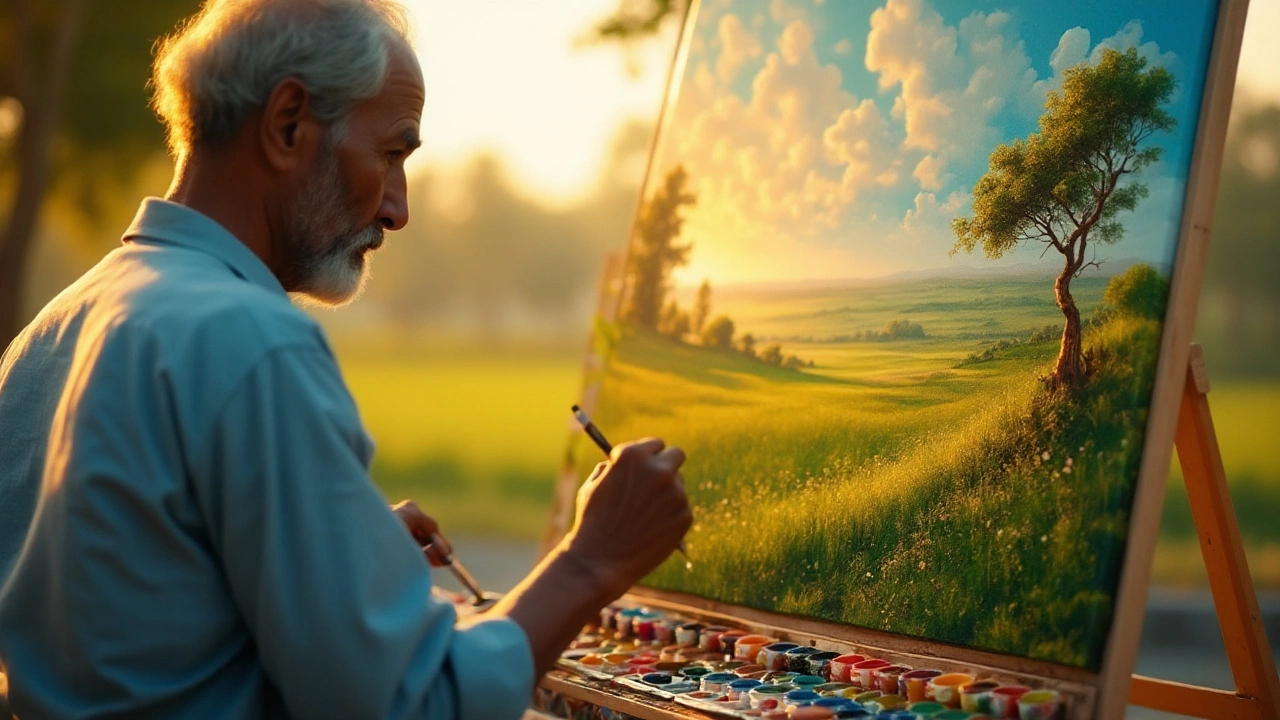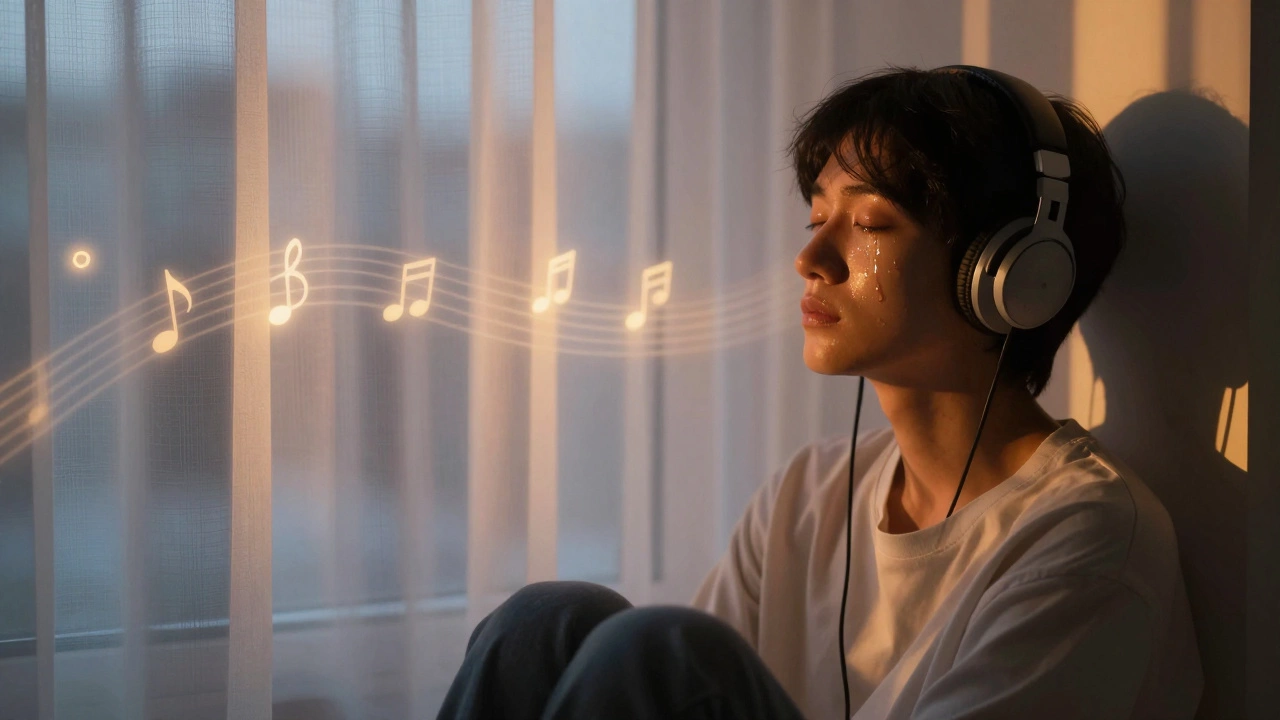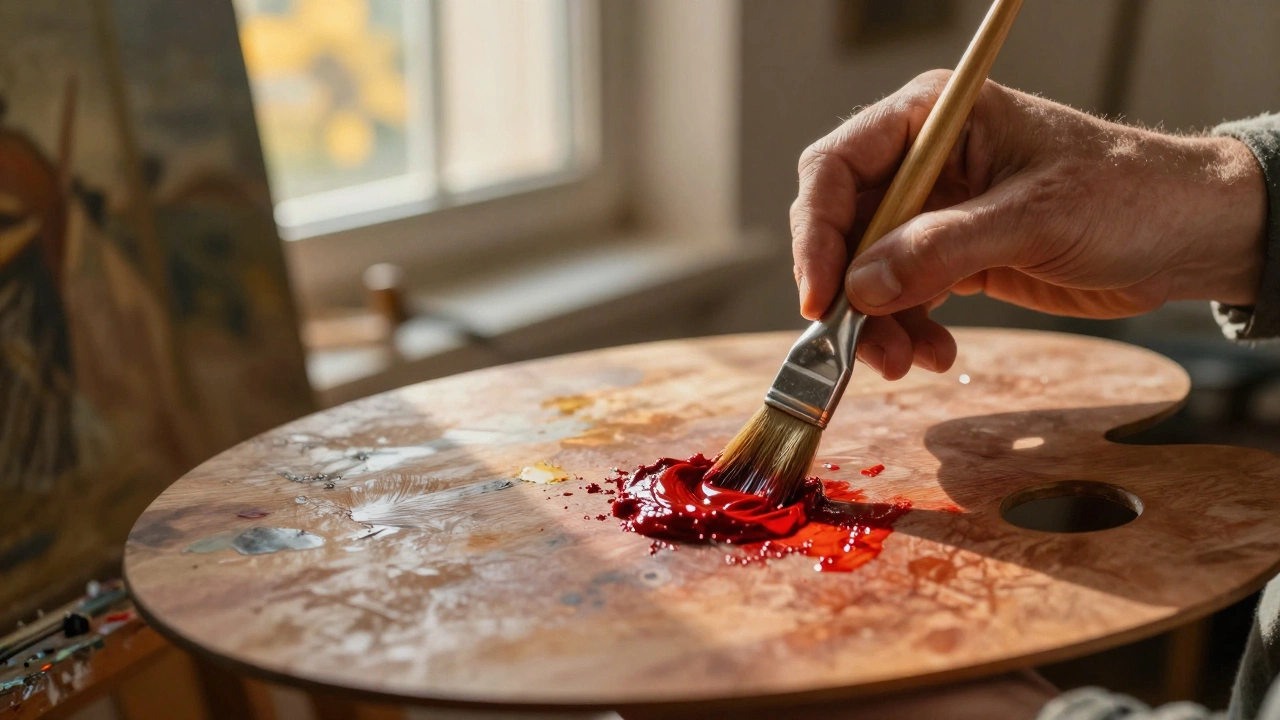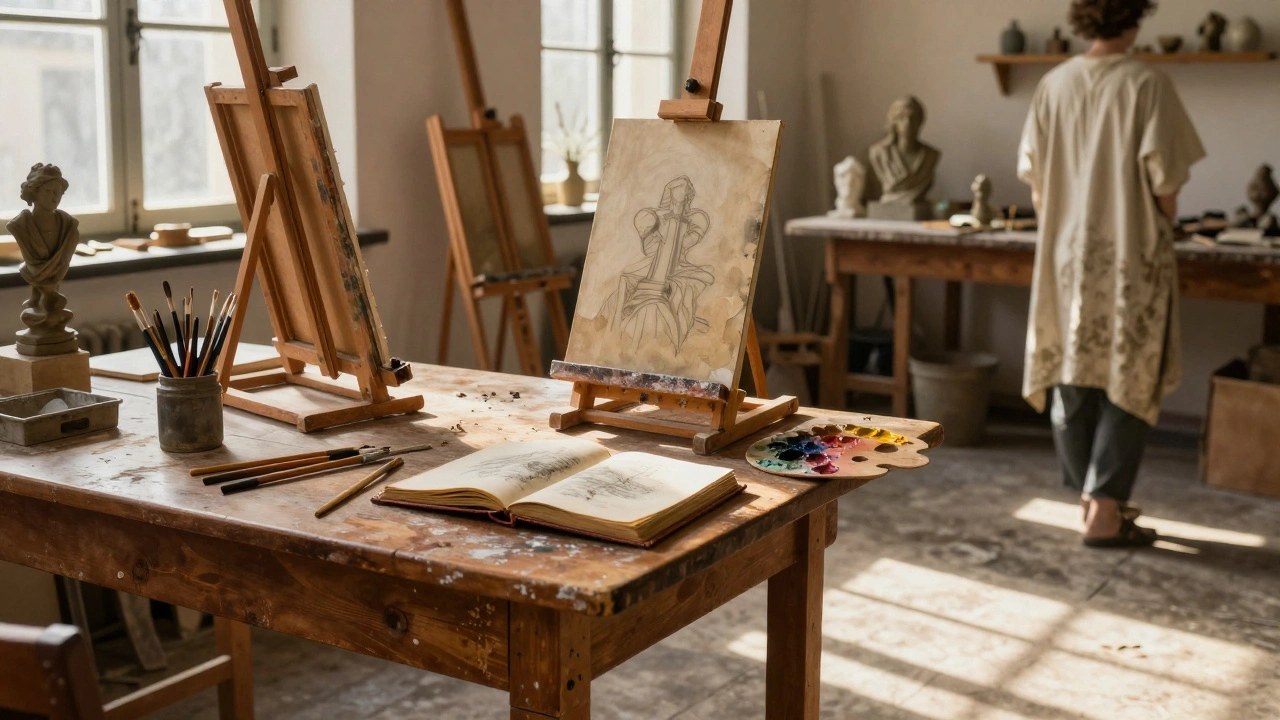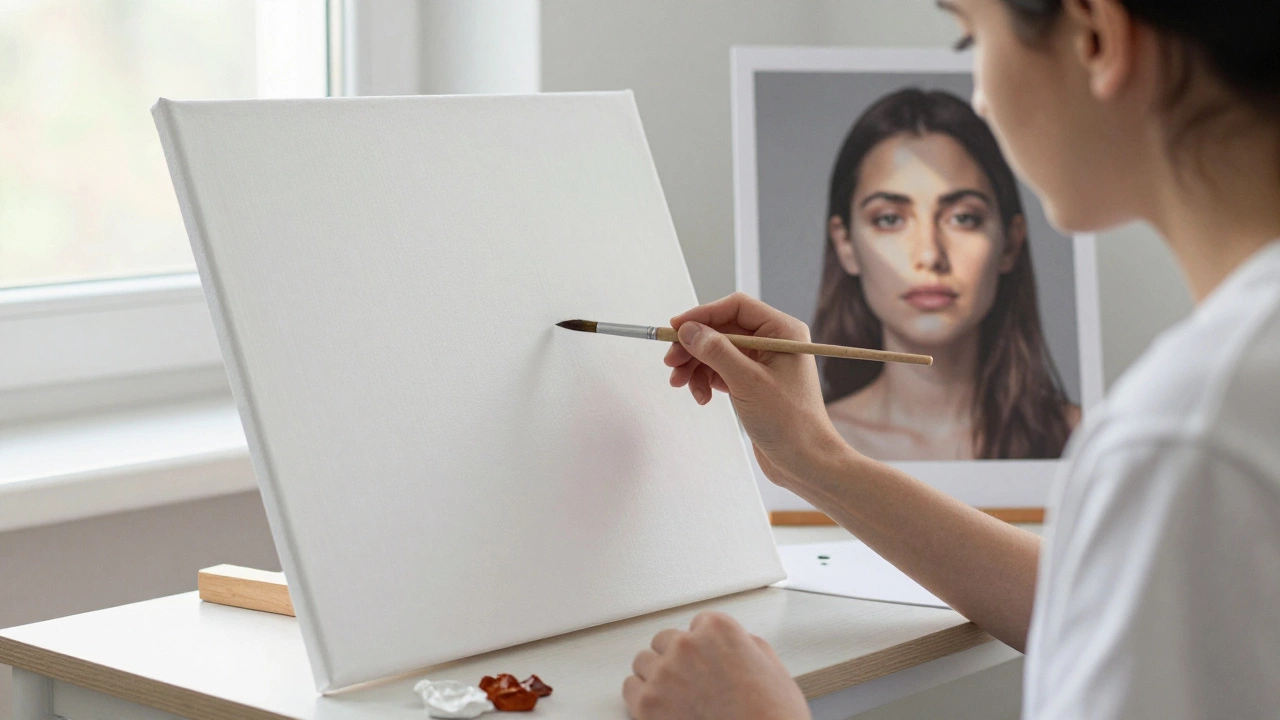Diving into the world of landscape painting can be both exciting and a little daunting. With endless scenes from grandiose mountain ranges to the serene sounds of a bubbling brook, the choice of subject can spark varied emotions and styles.
Picking the right scene to start with is crucial. Look for areas that resonate with you, that tell a story, or simply hold your interest. Your environment becomes your muse, and sometimes inspiration is found in the most unexpected places. Even my cat Luna, lounging in the windowsill, occasionally offers unexpected moments of serene beauty that somehow translate into my outdoor settings.
- Choosing Your Scene
- Essential Tools
- Understanding Composition
- Color and Light Mastery
- Techniques and Textures
- Troubleshooting Common Mistakes
Choosing Your Scene
Picking a subject for your landscape painting is much like choosing a partner for a dance—there should be a connection and an element that captivates you. When traversing your surroundings or even browsing through photographs, it's vital to identify scenes that speak to your artistic soul. Consider elements like the balance of composition, the interplay of light and shadow, and the seasonal colors at play. Many artists find that visiting a location multiple times unlocks new perspectives and moods as the light changes throughout the day. Capturing that essence demands patience and sometimes a bit of trial and error, but it is the pursuit of that connection that often leads to the most authentic and compelling pieces of art.
The great impressionist painter Claude Monet once said, "It's on the strength of observation and reflection that one finds a way. So we must dig and delve unceasingly." This emphasizes the importance of keen observation when selecting a landscape to paint. Sometimes, a scene may not reveal its full potential until you've spent time observing the subtle nuances, like the way the breeze caresses the grass or how sunlight filters through a canopy of leaves, casting fleeting patterns on the ground. Keeping a journal or sketchbook handy can be a valuable practice for quickly capturing these transient details, allowing you to reflect on them when you sit down in front of your easel.
Consider marshaling the different components of your scene to lead the viewer's eye through your painting. This involves an understanding of natural lines and shapes that communicate movement and flow. For instance, a winding path might draw attention from the foreground into the distance, creating a sense of depth. Think about the textures—how will you depict the rugged surfaces of rocks or the glossy sheen of a lake? These questions are crucial as they dictate not only the composition but the techniques you will employ once you begin painting. By breaking down the landscape into manageable elements, the grand task of representing nature becomes more approachable.
Utilize Experimental Locations
Don't be afraid to explore unconventional scenes or locations as well. Sometimes, the most enchanting landscapes are not found in majestic hills or idyllic meadows but in the urban juxtaposition of nature encroaching upon cityscapes or in the quietly stirring ambiance of a street corner park. Such scenes can offer a fresh perspective and introduce challenging yet exciting elements, such as capturing human interaction within a natural setting or experimenting with night scenes where artificial and moonlight mingle.
A survey by Princeton University noted that people tend to overlook beauty in their immediate environment due to familiarity. For an artist, breaking this familiarity by deliberately seeking the overlooked can unveil extraordinary scenes. Challenge yourself to find potential in everyday settings, whether it's a local park, your backyard, or even a window view that captures unique angles. These settings often provide surprise and inspiration, allowing you to stretch your creativity beyond what is immediately apparent. As you develop your style, these familiar places become the unique tableau upon which your distinct artistic vision unfolds.
Essential Tools
Embarking on your journey into landscape painting involves equipping yourself with the right set of tools to effectively express your vision. While each artist's toolkit might vary based on personal preference and style, certain foundational items are a staple in capturing the beauty of nature on canvas. For starters, choosing your canvas is key. Some might start with simple canvas boards that offer a sturdy surface, whereas others might favor stretched canvases for their resilience and ease of use. The size of your canvas can also affect your work; artists often recommend beginners to start with a medium-sized canvas to balance detail with coverage.
Paints are, naturally, another critical element, with oil and acrylics being popular choices for landscapes due to their vibrant colors and ease of manipulation. Acrylics are often celebrated for their quick drying times, allowing for faster layering and adjustments, while oils, with their rich texture and slower drying period, give ample time for blending and refining colors on the canvas. Brushes come next, and having a variety of shapes and sizes can make all the difference in achieving desired effects. Flat brushes are ideal for broad strokes and large areas, while detail brushes are indispensable for intricate parts or adding finishing touches.
The art of landscape painting also involves understanding the role of a palette knife. Often underestimated, palette knives are wizardly tools for mixing and applying paint, offering unique textures which brushes cannot emulate. They are indispensable for creating reflective surfaces like water, or the rugged textures of rocks and cliffs. As the renowned art student Johannes Itten once said, "Only those who love color are admitted to its beauty and presence..." This understanding of color brings us to the necessity of a well-organized paint palette, which helps you access and mix colors efficiently during the painting process.
Additional accessories include easels, which hold your canvas in place at the perfect angle, letting you view your work comfortably. Easels range from compact tabletop versions to larger standing models for more expansive canvases. A clean workspace should never be underestimated, which includes cleaning materials like rags and paint-thinning agents to keep your brushes in prime condition. Zachary Copeland, an experienced landscape artist, writes, "The tools we choose become an extension of our spirit and creativity."
Finally, having a space that fosters creativity is crucial. Whether your studio is an entire room or the corner of a shared space, ensure you have good lighting, and an atmosphere that inspires. The marriage of the right tools, environment, and your yearning to capture the world's beauty sets the stage for an engaging painting experience. Creating landscapes becomes less daunting and more of a natural dialogue between artist and nature, a conversation painted with every new stroke you brave upon canvases.
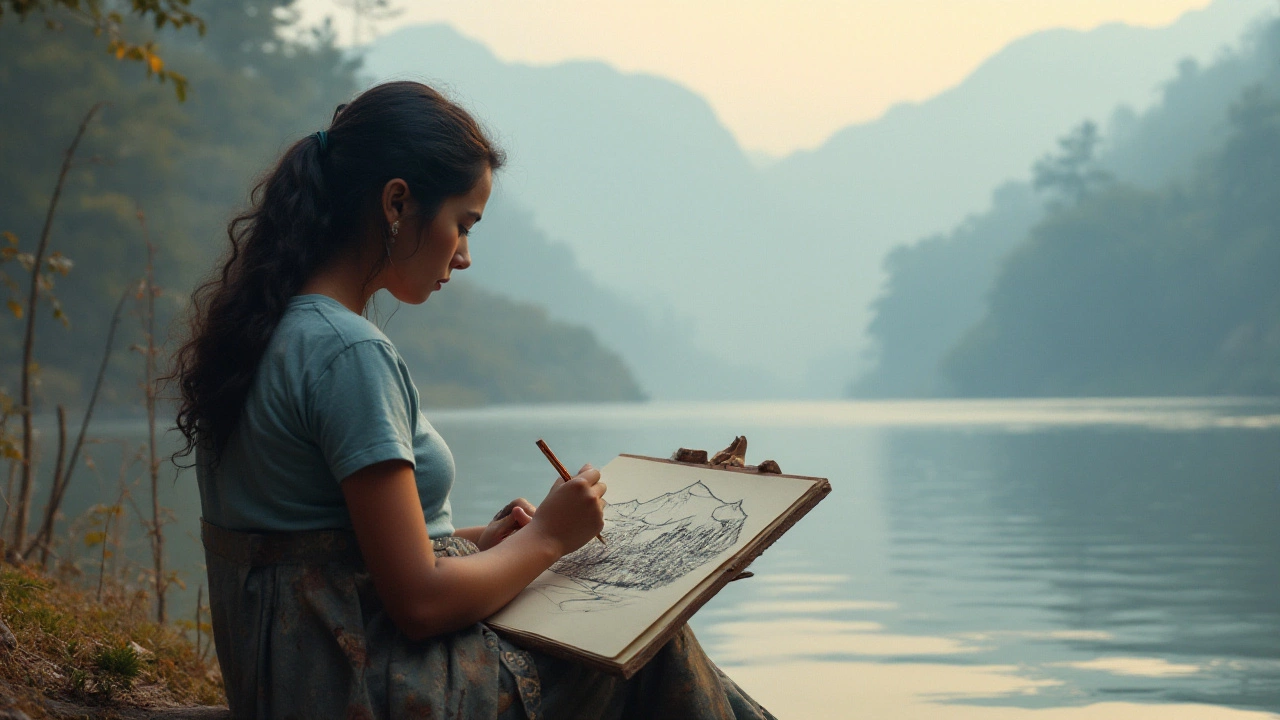
Understanding Composition
The beauty of landscape painting often lies in its composition—a deliberate arrangement of elements within a frame that either leads the viewer's eye through the image or invites them to linger on specific areas. The composition is the foundation of your painting, setting the stage for the story you wish to tell. To construct an effective composition, one of the most popular principles to apply is the rule of thirds. This technique involves dividing your canvas into nine equally-sized sections with two horizontal and two vertical lines. By placing points of interest where these lines intersect, you can create a sense of balance and harmony that is visually pleasing. Imagine looking out at a sunset. Placing the horizon on the lower third rather than dead center can give you a grander sky view. This small adjustment can dramatically impact the emotion conveyed by the piece.
The notion of leading lines is another element to consider. These are natural pathways like a winding river or a path that guides viewers through the scene, creating a narrative flow. We often see this technique in art galleries in famous works that capture our attention without us truly understanding why at first. It’s as if these paintings have built a path for our exploration within their borders. For instance, Vincent van Gogh's 'The Starry Night' uses swirling lines in the sky to captivate and lead the observer's eye throughout the painting.
Artists also play with foreground, middleground, and background layers to add depth to a scene. A good composition should make the viewer feel like they're stepping into a space, not just looking at a picture. Consider how Claude Monet, in his 'Water Lilies' series, used carefully chosen focal points in the foreground, coupled with a beautifully blurred background to evoke tranquility and space. His command of composition invites you to meditate within the garden itself.
As Pablo Picasso once reflected, "A painting is never finished—it simply stops in interesting places." This timeless perspective underlines the importance of composition as an evolving element--one that grows with the artist's experimentation and learning.
Color balance within the composition also plays an essential role. Typically, it's wise to limit your palette initially. This restraint may seem counterintuitive, but using fewer colors ensures they complement each other and maintains a cohesive look. For instance, if you're painting a landscape under a bright sun, warming tones may dominate, with cooler colors strategically placed to add contrast and depth.
Finally, understanding the visual weight of objects and colors in your scene is vital. Darker elements or stark contrasts often draw the eye first—thus, these should be strategically placed to anchor your piece or highlight key areas. Balancing the placement of these elements requires practice and perhaps a bit of courage to experiment beyond the boundaries of traditional methods. But remember, mistakes are simply opportunities to learn and grow as an artist.
Color and Light Mastery
The dance of light and color on a canvas is nothing short of a magical transformation. It's common knowledge among artists that understanding this interplay is crucial for creating engaging landscape paintings. Mastery of these elements can breathe life into your work, taking it from flat and lifeless to vibrant and dynamic. First and foremost, study how light affects the landscape at different times of the day. Morning light offers a softer touch with cooler hues and long shadows, while midday sun can wash the scene in bold, harsh highlights and deeper shadows. As an artist, asking yourself how the lighting imparts emotion into the scene is the beginning of crafting landscape paintings that evoke feelings. Embrace the vibrant colors of a sunset, which tend to be rich in reds, oranges, and purples, adding warmth and emotion to your work.
To truly render the landscape painting with authenticity, one must understand the color wheel. The wheel introduces complementary colors — hues that, when placed side by side, intensify each other. This technique is invaluable; imagine a blue mountain range with an orange sky at dusk. These opposites enhance each other's brilliance, creating striking imagery that captivates viewers' hearts. Another important aspect is the use of atmospheric perspective. As distancing layers recede, colors tend to lose saturation and shift towards the cooler spectrum. Utilizing a range of blues, grays, and faded greens can accurately represent this distant fade, conveying depth and space.
"Each morning we are born again. What we do today is what matters most." — BuddhaPaying attention to each layer of your painting can bring a unique freshness to every stroke you make today. Nature itself is a wealth of inspiration. Observing how light bounces off leaves or shimmers across water can also guide your use of color. In many cases, reality is made up of far complex reflections and refractions than initially perceived. For instance, the reflection of the sky on wet sand might contain a spectrum not only of blues but purples and pinks that are not immediately obvious. Embracing these hidden hues can add authenticity in innovative ways.
When it comes to applying these elements, practice with small sketches first to experiment with light source placement and its impact. This helps in deciding the strongest light direction which will define both the tonal values and the mood. Journeying into the world of landscape painting often reveals these practices as foundational steps. Many find that capturing light and color accurately is sometimes more daunting than starting with composition or form. But this challenge also transforms into a rewarding experience, unlocking a deeper layer of art appreciation and understanding. Emotion flows more seamlessly from your hands when the essence of light and color in landscapes is truly understood.
Painting tips and tricks often revolve around tools: a well-chosen palette knife can add texture to greeneries and rocks or blending mediums for smooth transitions in skyscapes. And remember, experimentation is your friend. Mixing acrylics or oils with mediums can offer varying transparencies, allowing layers to interact in unexpected ways. The interplay between bold strokes of light and gentle fades can craft serene scenes or energetic storms, exemplifying the passion behind landscape painting. Once these elements harmonize, the depth felt by spectators will be intangible yet palpable.
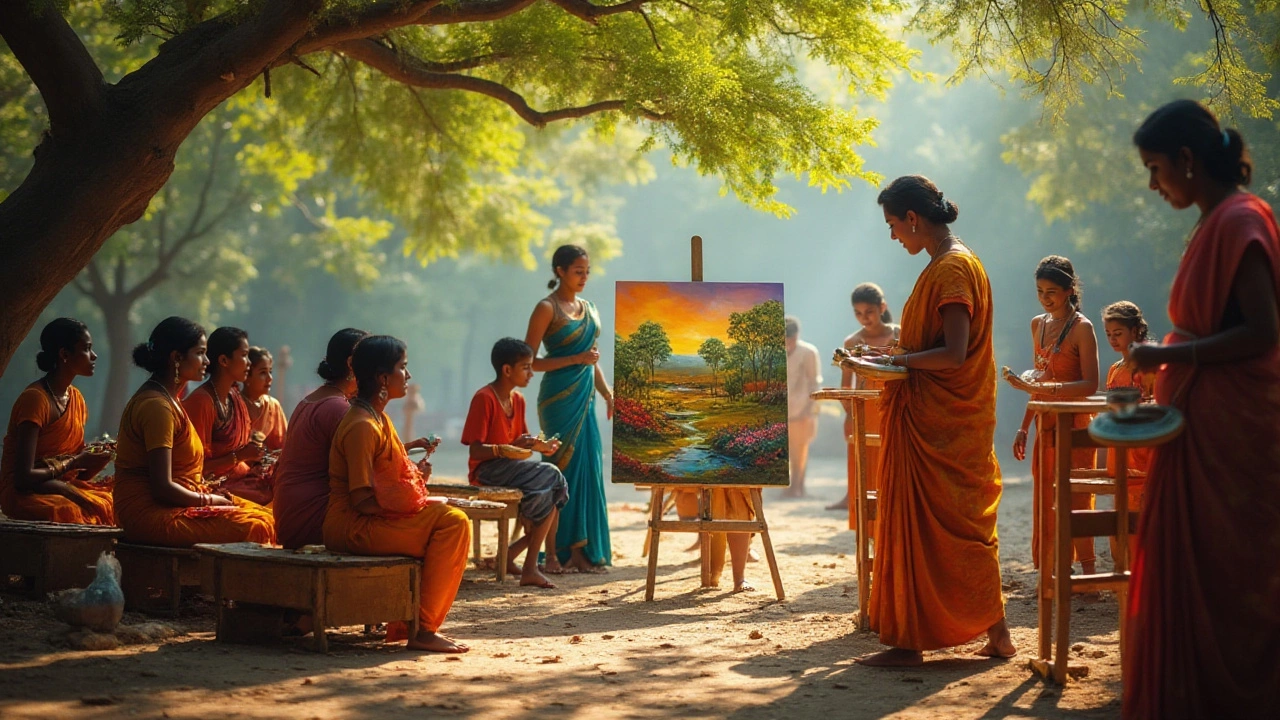
Techniques and Textures
Creating captivating landscapes is as much about the technique you employ as it is about the scene you choose to paint. One fundamental approach is to consider the texture that each element in your landscape embodies. Trees, rocks, water, and sky each carry a distinctive texture, subtly influencing the viewer's perception. Texture can be gauged through the brushstrokes used, the medium applied, and even the tools themselves. It's important to note that traditional brush techniques can be enhanced by the use of palette knives or even unconventional tools like sponges. This methodology is not strictly reserved for oil paintings but can profoundly affect watercolor and acrylic works too. As you dive into painting textures, remember that smooth strokes often signal calmness and serenity, whereas jagged, erratic patterns may evoke tension or movement.
Experimentation is key in finding what works for you, and trial and error are an integral part of mastering texture in landscape painting. There’s a fascinating process behind building layers to achieve depth, as different layers dry at varying rates, so patience becomes a valuable asset. One old yet timeless technique involves applying heavy impasto on foreground elements to give a three-dimensional feel, drawing the viewer into the scene. The versatility of impasto allows artists to paint with movement and vitality, each stroke deliberately suggesting the tangible surface of the depicted subject. Color and light mastery play a critical role in ensuring these textures remain realistic, helping them display the correct material content. While using light layers for distant hills helps create perspective, rough and pronounced textures on tree barks or stony paths closer to the viewer add realism.
In the words of the renowned artist Vincent van Gogh, "I am seeking. I am striving. I am in it with all my heart." This statement echoes the journey every painter embarks on when experimenting within new dimensions of technique. You must commit wholly to trying new methods, whether it's layering glazes with transparency to imitate the reflective surface of a tranquil lake or employing dry-brushing techniques to convey the harshness of raw mountain stone. Such diverse methods introduce new narratives and emotions within your artwork that are nearly impossible to achieve otherwise.
Guiding Techniques
If you're starting, here's a simple yet robust process to follow: begin by setting the tones of your canvas. With broader strokes, lay down a base layer using larger brushes or rollers for homogeneity in skies or water surfaces. This practice serves as an underpainting or tonal foundation, which shapes the landscape's atmosphere. Transition by sharpening textures through add-ons; switch to stiffer brushes or palette knives. Work with and alongside your strokes to induce natural formations as they occur in nature, consciously avoiding mechanical replicability. Artists like Bob Ross have famously demonstrated that 'happy accidents' are pivotal in landscape creation, wherein the unexpected brush motion can introduce realism that intentional strokes fail to achieve.Remember, landscape painting is a journey requiring both perseverance and experimentation. You might often find yourself revising layers or experimenting with unique applications. With these approaches, each painting becomes a personal discovery and learning experience, capturing not just the essence of nature but also remarkably reflecting your growth as an artist.
Troubleshooting Common Mistakes
Embarking on the journey of landscape painting offers creative freedom, but like any artistic endeavor, it presents its own set of challenges. One of the most widespread mistakes is neglecting the depth of field. Beginners often paint everything in sharp focus, leaving their landscapes looking flat and unrealistic. To overcome this, understanding atmospheric perspective is crucial. This technique involves softly blurring objects as they recede into the distance. It can add a layer of realism to your artwork by mimicking how the human eye perceives distant objects. A simple trick is to use cooler tones and less detail for background elements, which instantaneously creates depth.
Color selection is another common hurdle. Many novice painters create landscapes with colors they presume are found in nature, only to end up with hues that appear artificial. The color wheel is a pivotal tool for artists, helping you to see complementary colors that add vibrancy and harmony to your work. Test colors on a separate canvas to see how they interact before committing them to your piece. It's often helpful to reference the work of accomplished artists who have mastered color theory.
"Nature is not only all that is visible to the eye... it also includes the inner pictures of the soul." - Edvard MunchHis perspective can inspire artists to observe nature more intently and trust their inner vision as a guide.
Composition often trips up aspiring painters as well. Without a solid composition, a painting can appear chaotic or unbalanced. The rule of thirds is a reliable guideline: imagine your canvas divided into nine equal parts by two equally spaced horizontal and vertical lines. Key elements of your painting should fall on these lines or their intersections. This method adds interest and movement to your artwork. Additionally, try sketching your landscape beforehand. A rough draft can help you determine which elements are the focal points and how they connect, ensuring a harmonious composition.
Another pitfall is getting stuck in the details too soon. It’s tempting to dive into the intricate parts of a landscape, like the delicate leaves on a tree or the ripples on water. However, starting with the larger shapes and understanding the general light direction creates a stronger foundation. Details should be the icing on the cake, not the starting point. Build up textures gradually and let your background layers dry completely before adding finishing touches. Patience here can drastically affect the polish and coherence of your piece.
Technical issues can also trouble many artists, especially in understanding the behavior of different paints. Acrylics dry faster than expected, while oils take time, offering a blending period. Knowing these tendencies can aid in choosing the right medium for your painting style. Consider keeping a set of practice canvases to test out techniques and troubleshoot materials. By learning the idiosyncrasies of your chosen medium, unwelcome surprises are less likely to arise in your final piece. Keep experimenting, and remember, each mistake is a step towards mastery.
| Issue | Correction | Impact on Painting |
|---|---|---|
| Flat background | Use atmospheric perspective | Adds depth |
| Unrealistic colors | Consult color wheel | Creates harmony |
| Poor composition | Apply rule of thirds | Enhances focus |
